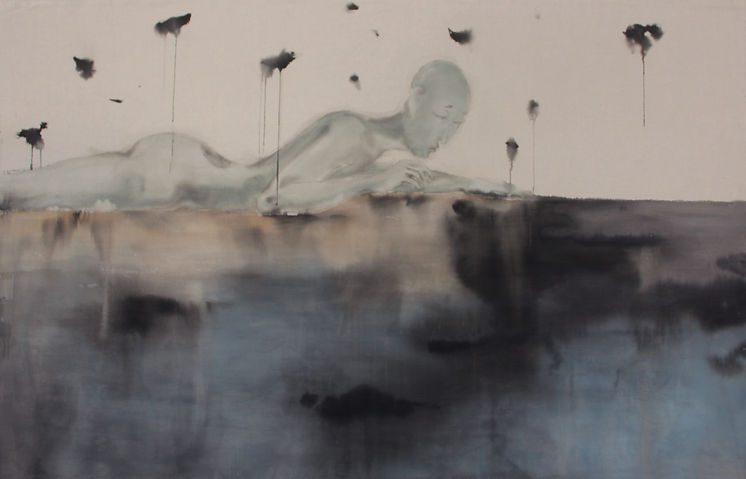SHANSHAN JIANG


Drawing humans to echo their resonance with the vastness of the cosmos. Shanshan Jiang
Artistic creation is regarded as a profound process of self-exploration. Through material media and the creative process, it is possible to touch upon a fleeting divine experience. This is not merely a product of inspiration and thought, but also an experience involving both body and mind, akin to a physiological response. As Deleuze stated in "A Thousand Plateaus": "Art is not meant to represent, but to capture those elusive forces and sensations." Although art is realized through specific materials and techniques, its essence transcends these material forms, reaching a higher state of existence.
In the process of artistic creation, interaction with materials can lead to a deep understanding of self and existence. This process is similar to Heidegger's concept of "being-toward-death" in "Being and Time," where facing one's finitude leads to a deeper comprehension of the meaning of existence. When one experiences the flow of space and time in creation, it is essentially an experience of the unity of heaven and humanity, a unique spiritual experience of artistic creation.
From a cosmic perspective, this can be combined with the traditional Chinese philosophy of the unity of heaven and humanity. This philosophy emphasizes the harmony between human sensory experiences, observational abilities, and natural laws. Specifically, this harmony is reflected in understanding one's developmental patterns through the observation of seasonal changes, day and night cycles, and natural phenomena, and finding reflections and parallels of existence in these natural phenomena. As stated in the "I Ching": "As heaven maintains vigor through movement, a gentleman should constantly strive for self-improvement; as earth's condition is receptive devotion, a gentleman should hold the outer world with broad virtue."
In this series of artworks, natural elements are not directly depicted, but are represented through human figures. By portraying the mental states of humans observing and drawing inspiration from nature, the deep connection between nature and the human spiritual world is conveyed. Rudolf Arnheim, in "Art and Visual Perception," mentioned: "The true power of art lies in its ability to concretize the most profound perceptions and experiences, allowing viewers to share in them." This method of using human figures to express natural inspirations retains reverence for nature while highlighting human reflection and contemplation in the face of nature.



When I abandon the experiences I've been told and approach the world like a child, it is as if the world is rebuilt anew. Our understanding is accumulated through experiences and metaphors. This process is akin to the creation of Chinese characters, where ancient people observed natural phenomena—such as the shape of fish, the flow of water, and human behavior—then mimicked these forms, summarized their features, and added aesthetic refinements, thereby forming a civilization rich with profound cognitive logic.
Imagine if modern individuals, like "primitive people," were to re-experience the world through direct sensory encounters. Hearing the sound of water, touching ice, and smelling sunlight—these raw and immediate sensory experiences would prompt a reconstruction of modern perception. By shedding preconceived notions, it becomes possible to view the world with a fresh, untainted perspective, revealing the deeper logic and latent possibilities hidden within everyday experiences.
This process of reconstruction not only fosters new understanding but also creates space for the growth of new forms of civilization. It requires courage and imagination, as well as a deep reflection and critique of existing knowledge systems. Through direct sensory experience and new explorations of the world, an entirely new realm of cognition can be opened. This is not merely a challenge to existing knowledge but an exploration of new cognitive systems and forms of civilization. Ultimately, this journey of discovery will guide humanity toward a more open and innovative future, creating a vibrant and diverse new civilization.



In this series of works, I am dedicated to exploring the ways humans communicate with nature, aiming to break traditional cognitive models of understanding nature.
By intertwining "human senses" with "natural objects," such as in the piece "Listening to Water," I depict a person using their sense of hearing to converse with water, thereby attempting to gain a new experience and understanding. This interaction fosters a new relationship between humans and nature, creating a novel language and bond. This process not only redefines the so-called "natural system" but also redefines the concept of "human" in relation to "nature."

